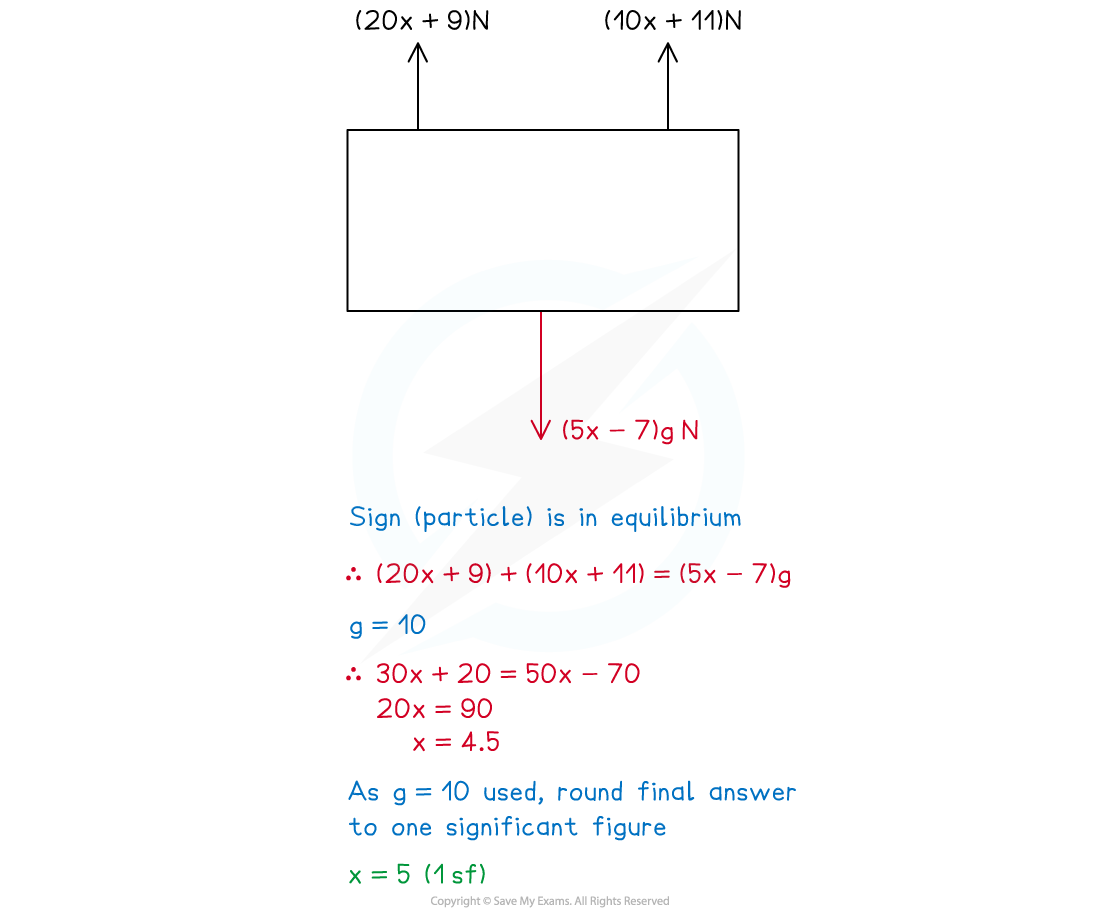- 翰林提供学术活动、国际课程、科研项目一站式留学背景提升服务!
- 400 888 0080
AQA A Level Maths: Mechanics复习笔记3.1.2 Equilibrium in 1D
Equilibrium in 1D
What is Newton’s First Law of Motion (N1L)?
- An object at rest will stay at rest, and an object moving with constant velocity will continue to move with constant velocity, unless an unbalanced force acts on the object.
What is the resultant force and an unbalanced force?
- The resultant force is the sum of forces acting on a particle – consider it as a single force that achieves the same result as all the forces combined
- An unbalanced force is a force acting on a particle that is not cancelled by another force acting in the opposite direction
- So a non-zero resultant force will be unbalanced (hence the wording in Newton’s First Law of Motion) and the particle will accelerate
What does equilibrium mean?
- A particle is in equilibrium if the resultant force acting on it is zero
- In other words when the sum of the forces acting on a particle is zero
- For example, in the horizontal direction, any forces acting to move the particle to the left will be balanced by any forces acting to move the particle to the right.
- There does not need to be the same number of forces in both directions – two forces could be acting to move the particle to the left but are cancelled out by only one force acting to move the particle to the right.

Worked Example


Exam Tip
- It is unlikely you will get an exam question that only deals with one dimension at AS and A level. However two-dimensional problems can often be broken down into two one-dimensional problems so the principles in this note are important to understand.
- Unless told otherwise, use g = 9.8 m s-2 rounding your final answer to 2 s. f.; if directed to use g = 10 m s-2 then round your final answer to 1 s. f.
转载自savemyexams

早鸟钜惠!翰林2025暑期班课上线

最新发布
© 2025. All Rights Reserved. 沪ICP备2023009024号-1








